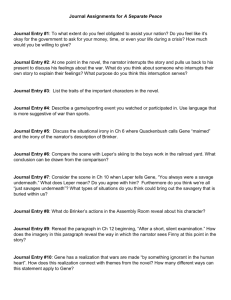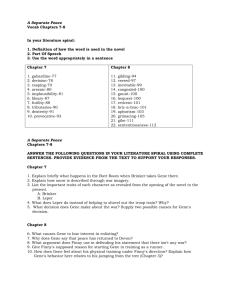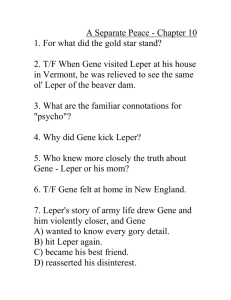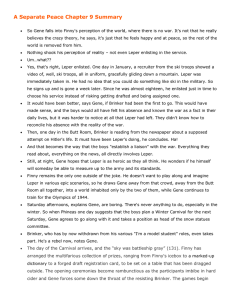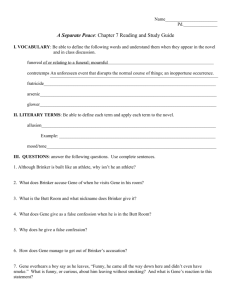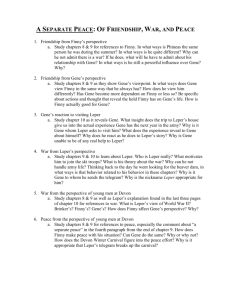A Separate Peace Worksheet: Chapters 9-13 Analysis
advertisement
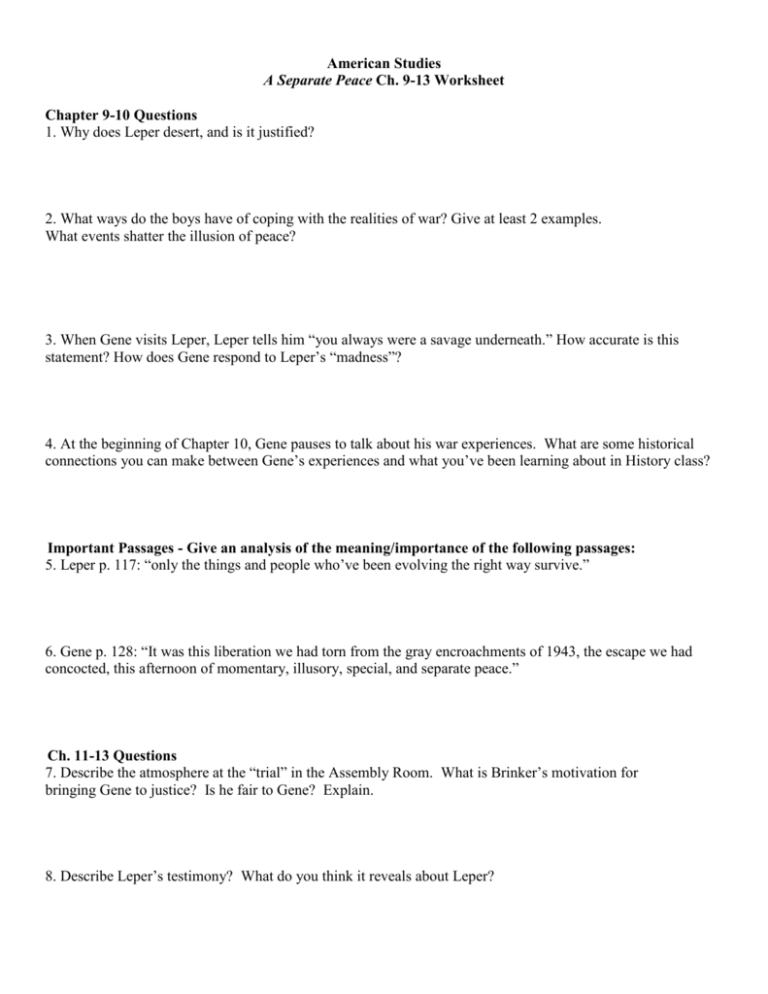
American Studies A Separate Peace Ch. 9-13 Worksheet Chapter 9-10 Questions 1. Why does Leper desert, and is it justified? 2. What ways do the boys have of coping with the realities of war? Give at least 2 examples. What events shatter the illusion of peace? 3. When Gene visits Leper, Leper tells him “you always were a savage underneath.” How accurate is this statement? How does Gene respond to Leper’s “madness”? 4. At the beginning of Chapter 10, Gene pauses to talk about his war experiences. What are some historical connections you can make between Gene’s experiences and what you’ve been learning about in History class? Important Passages - Give an analysis of the meaning/importance of the following passages: 5. Leper p. 117: “only the things and people who’ve been evolving the right way survive.” 6. Gene p. 128: “It was this liberation we had torn from the gray encroachments of 1943, the escape we had concocted, this afternoon of momentary, illusory, special, and separate peace.” Ch. 11-13 Questions 7. Describe the atmosphere at the “trial” in the Assembly Room. What is Brinker’s motivation for bringing Gene to justice? Is he fair to Gene? Explain. 8. Describe Leper’s testimony? What do you think it reveals about Leper? 9. What happens at the culmination of the trial? 10. Explain the significance of Finny’s operation and its outcome. What is your final evaluation of Finny? In what ways is he like Jay Gatsby? 11. How does Brinker’s father represent a generational conflict over warfare? Important Passages - Give an analysis of the meaning and importance the following passages: 12. Gene p. 177-179: Gene’s “double vision” 13. Gene p. 186: Gene’s identity/connection to Finny 14. Gene p. 194-196: Final analysis of Finny and the war 15. Gene p. 196 Attacks on enemy and “Maginot Lines” 16. Who are the static and dynamic characters? Explain why. Motifs/Symbols and Themes: Motifs and symbols generally serve to develop the major themes in a work of literature. Make a list of at least 5 motifs/symbols in A Separate Peace and articulate a universal theme each suggests.
